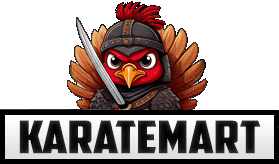EDC Knives for Beginners: How to Choose Your First Everyday Carry Blade
November 17th, 2025

Choosing your first EDC knife can feel overwhelming, especially when you are new to the world of everyday carry and suddenly faced with dozens of blade shapes, steels, lock types, and designs. The good news is that you do not need to be an expert or spend a fortune to find a knife that fits your lifestyle. A good EDC knife is simply a compact, reliable tool that helps with the small tasks you run into every day, like opening packages, cutting loose threads, trimming cord, or handling quick fixes around the house. This guide breaks everything down in a simple, beginner friendly way so you can pick a knife you will actually use and enjoy carrying.
What Makes a Knife an EDC Knife
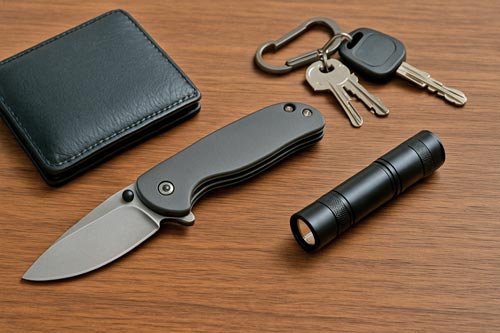
An EDC knife is simply a knife that you can carry every day without it getting in the way of your normal routine. The best everyday carry knives are compact, lightweight, and easy to open and close with one hand. Most people keep them clipped inside a front pocket or stored in a small pouch, which keeps the knife accessible without feeling bulky. What separates an EDC knife from a larger outdoor or survival knife is the focus on practicality. An everyday carry knife is meant for the small tasks that come up during the day, like opening packaging, cutting zip ties, trimming cord, or handling little fixes around the house or at work. A good EDC knife also feels comfortable in hand and secure when you are using it, which makes it dependable during daily chores.
Folding vs Fixed Blade: Which One Should Beginners Choose
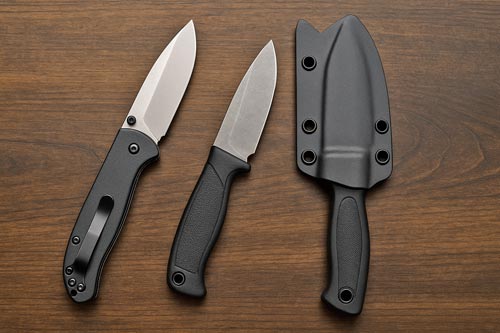
Most beginners start with a folding knife because of how easy it is to carry and how naturally it fits into daily life. A folding knife goes into a pocket without taking up much space, stays securely closed when not in use, and is generally viewed as a practical tool rather than a large outdoor knife. The ability to open and close the blade with one hand also makes it convenient for day to day tasks, especially if you often find yourself juggling packages, bags, or tools. For many people who are new to everyday carry, a folding knife feels like the most comfortable and approachable option.
Fixed blade knives offer a different set of advantages that appeal to users who prioritize strength and reliability. Since there are no hinges or moving parts, a fixed blade can handle more abuse and is less likely to fail under pressure. They also offer instant access because there is no need to unfold anything. The downside is that even small fixed blades need a sheath, and carrying one can feel more noticeable or awkward when you are not used to it. Some beginners might find fixed blades appealing for camping, hiking, or martial arts training, but they can be a little much for casual daily use.
For someone choosing their very first EDC knife, a folding knife is usually the easier and more versatile choice. It fits seamlessly into everyday clothing, it is simple to carry for long hours, and it does not feel intimidating to use. Once you gain more experience and have a better sense of what you prefer, you may find that a compact fixed blade has qualities you appreciate. Starting with a folding knife gives you a comfortable baseline to work from as you learn what your daily needs really are.
Blade Shapes Explained
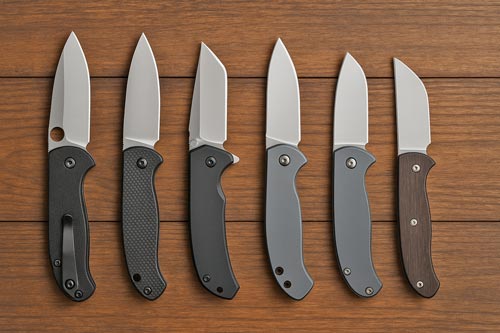
Blade shape plays a big role in how an EDC knife performs, so understanding the basic options helps beginners choose a knife that fits their daily needs. Even though there are many specialty blade shapes out there, most everyday carry knives fall into a few simple categories that are easy to recognize. Each shape has its own strengths, and the right one for you depends on what you usually cut and how much control you want while doing it.
The drop point blade is the most common choice for beginners because it offers a strong tip, a long cutting edge, and smooth control during everyday tasks. It works well for opening packages, cutting rope or zip ties, and general utility jobs without feeling fragile or overly sharp at the tip. Clip point blades come to a finer point, which makes them better for detailed or precise cutting. They are popular with people who need accuracy, although the thin tip can be easier to damage if you pry or twist.
Tanto blades provide a more reinforced tip that excels at piercing and cutting tough materials. Beginners who want extra durability often choose this shape because it handles rougher tasks, but the angled edge can take some getting used to. Sheepsfoot and wharncliffe blades have straight cutting edges that give excellent control. They are great for slicing tasks where you want maximum accuracy and a tip that is less likely to puncture something accidentally. These shapes are especially beginner friendly because they offer predictable and stable cuts.
Blade Steel Basics

Blade steel can be confusing for beginners, but you do not need to be a metals expert to choose a good EDC knife. Most reputable knife makers use steels that balance durability, corrosion resistance, and ease of sharpening. What matters most is how the steel behaves in daily use. A beginner friendly EDC knife should hold an edge long enough to get through everyday tasks but still be easy to sharpen when it eventually becomes dull. You will see a lot of fancy steel names in product listings, but the truth is that many common steels perform well for everyday carry.
One of the most popular choices for budget friendly and mid range knives is 8Cr13MoV. It sharpens easily, resists rust fairly well, and provides solid performance for lightweight daily cutting. Steels like AUS 8 and 440C offer similar benefits and remain beginner favorites because they do not require much maintenance. If you want something a little tougher, D2 steel is a step up in edge retention, although it can be slightly more prone to rust if you live in a humid area or do not wipe your blade down after use. For most people choosing their first EDC knife, any of these steels will work well without adding extra complication.
As you gain more experience, you may decide to experiment with higher end steels that promise better edge retention or added toughness. These premium steels can be great, but they often come at a higher price and may require different sharpening tools. Beginners do not need to worry about that yet. The most important thing is choosing a knife with steel that suits your environment and your level of maintenance. If you want something simple and dependable, choose a steel known for being easy to sharpen and resistant to rust. Once you know your preferences, you can upgrade to something more specialized with confidence.
Locking Mechanisms

Locking mechanisms are an important part of choosing a beginner friendly EDC knife because they control how securely the blade stays open during use. A good lock gives you confidence that the knife will not fold on your fingers while you are cutting, which is especially important when you are still learning how to handle a knife safely. Most folding knives use one of a few simple locking systems that have been around for years. Each one works a little differently, but all of them aim to keep the blade stable, secure, and easy to close when you are done using it.
One of the most common lock types is the liner lock, which uses a thin piece of metal inside the handle that moves into place behind the blade when it opens. It is easy to operate with one hand and is found on many beginner friendly knives. Frame locks work in a similar way, but instead of a thin liner inside the handle, the actual frame of the knife locks the blade in place. Frame locks are known for their strength and durability, and many users like the solid feel they provide. Back locks are another popular option, using a spring loaded bar along the spine of the handle that clicks into a notch in the blade. This design offers reliable stability and is often preferred by people who want a simple and sturdy mechanism.
Some modern EDC knives use button locks, which rely on a small button on the handle that controls both opening and closing. Many beginners appreciate how intuitive this feels because the blade stays locked until the button is pressed. No matter which design you choose, the lock should feel smooth, secure, and easy to disengage with one hand. Trying a few different lock types helps you figure out which one feels the safest and most natural for your daily routine.
Handle Materials and Ergonomics
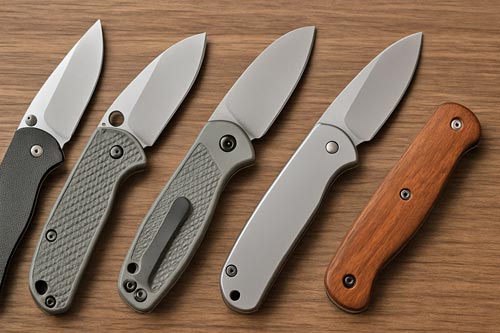
The handle of an EDC knife plays a huge role in how comfortable and secure the knife feels in your hand. Beginners often focus on the blade itself, but the handle is what you interact with during every cut. A good handle should fit your grip naturally, feel stable even if your hands are sweaty, and provide enough texture to keep the knife from slipping during basic tasks. Shape matters just as much as material. Curved, contoured handles tend to feel more comfortable for long use, while flat or squared designs can feel a little more compact in the pocket. Trying different handle shapes can help you find the one that feels the most balanced in your hand.
Common handle materials include G10, FRN, aluminum, and wood, each offering its own set of advantages. G10 is a fiberglass based composite that is lightweight, strong, and very grippy, which makes it a favorite for many first time knife owners. FRN is another beginner friendly choice because it is durable, affordable, and resistant to moisture. Aluminum handles feel sleek and sturdy, giving the knife a more premium feel, although they can be a bit more slippery unless they include texturing. Wood handles offer warmth and personality, and while they may not be as rugged as synthetic materials, they remain comfortable and functional for everyday tasks.
No matter which material you choose, ergonomics should be the deciding factor for a first EDC knife. A handle that feels good in your hand will give you better control, better accuracy, and better overall confidence when using the knife. Beginners often underestimate this part, but a well designed handle makes cutting safer and more enjoyable. When in doubt, choose a knife that feels secure, balanced, and natural the moment you pick it up.
How to Carry an EDC Knife Safely
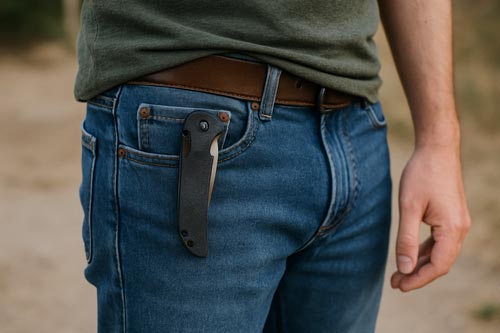
Carrying an EDC knife should feel natural and comfortable, and the safest way to do that is by keeping the knife in a secure and consistent location. Most beginners prefer carrying a folding knife clipped inside a front pocket because it keeps the knife stable, easy to reach, and protected from shifting around during the day. Keeping the knife in the same spot every time helps build good habits and makes it easy to find without fumbling. A quality pocket clip holds the knife in place so it does not fall out when you sit, walk, or move quickly.
If you prefer not to use a pocket clip, you can keep the knife loose in your pocket or inside a small pouch. This works well for people who want a more minimal setup, although it may take a little longer to access the knife when you need it. For compact fixed blades, a well fitted sheath is essential. Many small sheaths are designed for belt carry or inside the waistband carry, and these setups keep the blade secure while preventing accidental contact with the edge. Beginners should choose the method that feels the most comfortable and the least distracting during daily activities.
Safe carry also means being aware of your surroundings and using the knife responsibly. Make sure the blade is completely closed or sheathed before storing it, and never carry the knife in a way that exposes the blade or allows it to open on its own. Consistent, secure carry reduces risk and helps you build confidence as you get used to keeping a knife with you throughout the day. Over time, you will figure out which carry style fits your lifestyle best, but starting with a simple, secure method is the safest approach for beginners.
Beginner Mistakes to Avoid
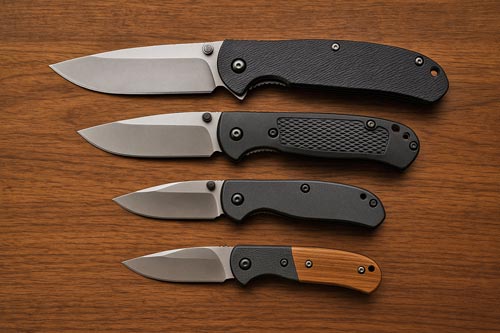
When you buy your first EDC knife, it is easy to get caught up in flashy designs or features that look impressive but do not actually help with daily use. One of the most common beginner mistakes is choosing a knife that is simply too large. Oversized blades can feel awkward in the pocket, draw unnecessary attention, and make simple tasks harder instead of easier. A practical everyday carry knife should disappear into your pocket until you need it, so choosing a compact and comfortable size is one of the smartest decisions a new knife owner can make.
Another mistake is ignoring ergonomics. Many beginners focus on blade style or steel type and overlook how the handle feels in the hand. A knife that is uncomfortable or slippery will not give you the control you need for safe cutting. Handles that dig into your grip or offer poor texture can lead to hand fatigue or slipping, especially during repetitive tasks. Beginners should prioritize a handle that feels natural, secure, and balanced from the moment they pick it up. Even simple tasks become easier when the knife feels like an extension of your hand.
A third common issue is choosing a knife based solely on marketing terms or tactical appearance. Some products look rugged or aggressive but lack the build quality or reliability needed for real daily use. Beginners should focus on trusted brands, proven designs, and materials that offer dependable performance. Another easily overlooked mistake is failing to check local knife laws. Even a practical folding knife may be restricted depending on blade length, locking mechanism, or carry method. Understanding your local rules prevents headaches and ensures you can carry your knife responsibly.
Legal and Practical Considerations
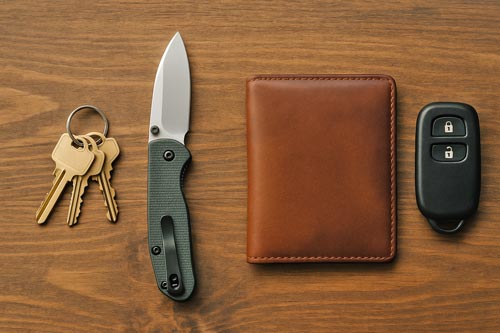
Before carrying an EDC knife every day, beginners should take a moment to understand how local laws apply to the knife they choose. Knife regulations vary widely depending on your state, city, or even specific public locations. Some places restrict blade length, while others limit the type of locking mechanism or how the knife can be carried. Even small folding knives may fall under certain rules, so it is always a good idea to look up the guidelines in your area before adding a knife to your daily carry. This simple step ensures that you are carrying responsibly and avoids any unexpected problems if someone asks about your knife or if you pass through an area with tighter restrictions.
Practical habits matter just as much as legal awareness. Beginners should make sure their knife is always stored securely, with the blade completely closed or fully sheathed. A loose knife in a bag or pocket can open accidentally, which creates unnecessary risk. It is also important to be thoughtful about when and where you use your knife. Taking it out only when you have a clear purpose and a safe space to work helps avoid misunderstandings and keeps others around you comfortable. An EDC knife is a useful tool, but it should always be used with consideration for your surroundings.
Once you understand the legal requirements and develop a routine for safe carry, an EDC knife becomes a reliable everyday tool that fits naturally into your life. Having this foundation helps beginners feel confident, prepared, and comfortable carrying a knife in public spaces. Staying aware, staying responsible, and staying within the rules are the key ingredients for making everyday carry simple and stress free.
How to Know When You Have Found the Right EDC Knife
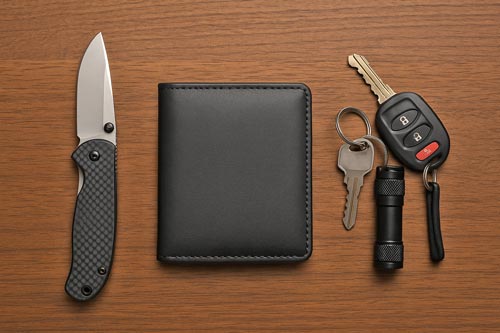
The right EDC knife should feel natural in your hand and easy to use during the small tasks that come up throughout the day. You should be able to open it smoothly, hold it comfortably, and put it away just as easily. Beginners often know they made the right choice when the knife becomes part of their daily routine without requiring extra thought. A good EDC knife feels like a simple tool that quietly helps with everyday chores.
Another sign that you picked the right knife is confidence. You should feel safe carrying it, safe using it, and comfortable taking it out when you need it. The blade should be sharp enough for common tasks and the lock should feel secure every time you open it. When the knife works the way you expect, you start to trust it as a reliable part of your daily carry. That trust is what turns a beginner into someone who understands the practical value of a well chosen EDC knife.
If you are still exploring your options, browsing different designs can help you figure out what appeals to you. Size, blade shape, handle material, and overall style all play a part in choosing the knife that fits your daily routine. You can take your time and compare what feels right. To see a variety of beginner friendly options, you can check out our selection of EDC knives and find a style that matches the way you live.
You May Also Be Interested In:
- 6 Everyday Carry Knives Under $20
- What are the Best Everyday Carry Weapons?
- Everyday Carry Weapons for Personal Defense
- Stealthy and Unique Weapons for Everyday Carry
- Everyday Carry Weapons for Personal Protection
- Everyday Carry for Self Defense: Practical Tools You Can Trust
- Bushcraft vs Survival Knives: Which Blade Would You Trust in the Wild?
- Cheap Knives Everyone Should Carry
- Bo Staff Techniques for Beginners: How to Master Balance and Control
- Steampunk Gun Blade and Other Unusual Weapons
Leave a Reply

